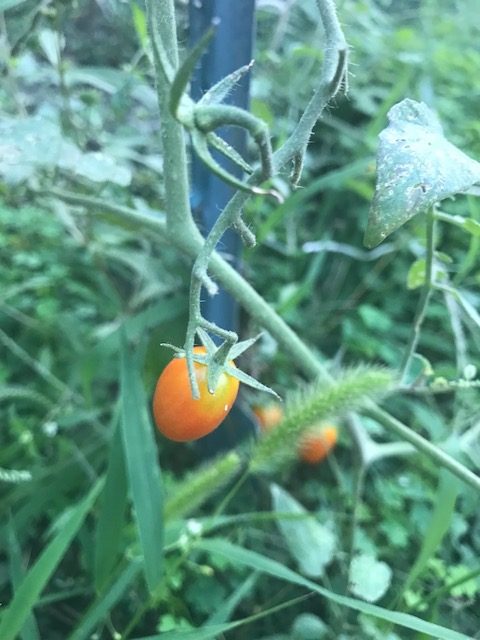At 12:00 on a Saturday, Head Chef, Kevin Willmann and Sous Chef, Dillon Witte are hard at work preparing for tonight’s dinner at Farmhaus. While many of the other restaurants on Ivanhoe Avenue are doing the very same afternoon prep, Farmhaus stands out. They are farm-to-table.
“It’s local. Everything’s from the farm straight to here,” said Dillon, “Everything’s locally sourced. . . everything’s from a 90-mile radius.”
Rather than obtain produce and meat from a third-party distributor, Farmhaus, like other farm-to-table restaurants, purchases their produce directly from nearby farms.
“All our stuff’s from Illinois and Missouri… We get a lot of stuff from Scharf which is in Millstadt Illinois. They grow some of the best strawberries, really good corn, nice peppers, tomatoes… Another place is Ozark Forest Mushrooms. They grow a lot of beautiful shiitake and oyster mushrooms,” says Dillon.
And he’s not wrong. I tried one of Farmhaus’s salads which features these mushrooms and they were truly the best mushrooms I have ever had.
The restaurant also grows some of their own produce. They have a garden in the backyard of their restaurant where they grow many of their vegetables. Because of this, the salad, though simple, bursts with flavor and tastes exquisitely fresh.
So why should we eat locally sourced produce? According to Dillon, one of the main reasons is health.
“It’s not processed,” said Dillon.
“And you’re getting more nutrients from your surrounding areas and [from] the soil in your area, so it cuts down on allergies,” Sarah, a server at Farmhaus, generously adds to our conversation while folding napkins during pre-dinner prep.
Non-local produce ripens as it ships, therefore it has to be picked before it’s at peak ripeness. The quick shipping of local produce makes it lose less of its nutrients and allows it to be picked when it’s naturally ripe, allowing it to retain more of the soil’s nutrients. Not to mention this shorter distance is much more friendly to the environment.
In terms of allergies, eating foods such as local honey can expose your immune system early on to the pollen in your area, allowing you to better combat allergies.
But farm-to-table doesn’t just impact the individual. Supporting it means supporting community.
According to Dillon, these farms are family owned and are more cared for, “It’s just good to support local and just know where stuff’s coming from.”
“You have a real connection with the food if you know where it came from. It’s not like it came from, you know, Alaska, and you’ve never been to Alaska. You know it came from across over in Millstadt or somewhere in Missouri,” says Sarah.
Eating farm to table is not the only way you can eat locally.
“It’s good to support your local food co-ops and go to your local farmer’s markets because that’s where a lot of these small farms sell their stuff and make connections with the chefs.”

